
2017 Participants at the Purdue Veterinary Medicine Open House
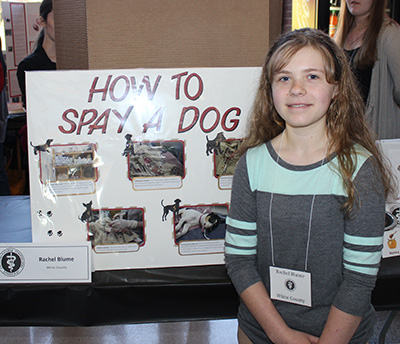
RACHEL BLUME
How to Spay a Dog
My 4-H poster was created with photos from the day I spent job-shadowing Dr. Jan Yerk in Remington, Indiana. Beginning with the necessary supplies, and concluding with recovery, the photos illustrate the procedure for spaying a dog.
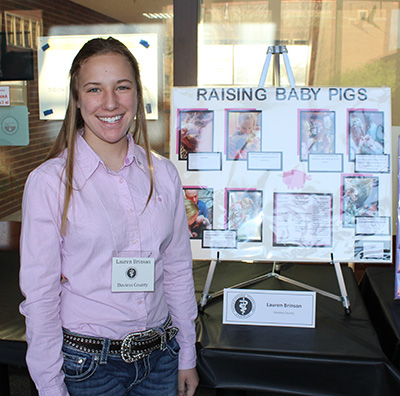
LAUREN BRINSON
Raising Baby Pigs
My poster outlines the key factors in raising baby pigs. It also presents the reasoning behind procedures such as ear notching, cutting teeth, giving injections, and proper nutrition. The poster provides a chart of steps completed to ensure that the piglets remain healthy and continue growing.

ANNALYSSA CRAIN
Horse Diseases- Bacterial; Viral
My poster gives a brief overview of bacterial and viral diseases. I discussed three diseases for each: Lyme disease, Tetanus, Strangles, West Nile, Equine Influenza, and Rabies. I made a list of bullet points containing key information such as whether or not it is contagious, symptoms, and prevention through possible vaccines. Lastly, I provided pictures with captions showing what a horse with that disease may look like.
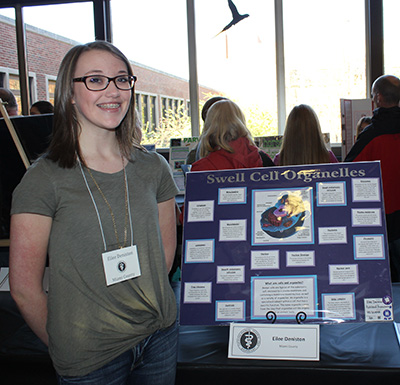
EILEE DENISTON
Swell Cell Organelles
My project is over an animal cell. My board displays a picture of a cell with every organelle within that cell. I also listed and added pictures of the different types of organelles and their functions.
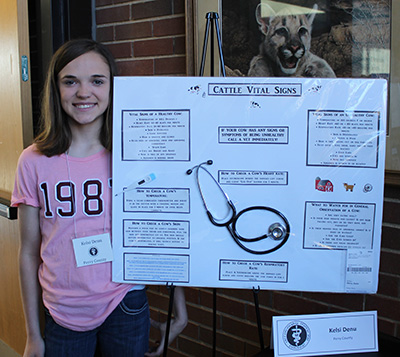
KELSI DENU
Cattle Vital Signs
This poster discusses the vital signs of a healthy and an unhealthy cow. My poster tells you how to check cow vital signs such as temperature, heart rate, respiratory rate and skin.
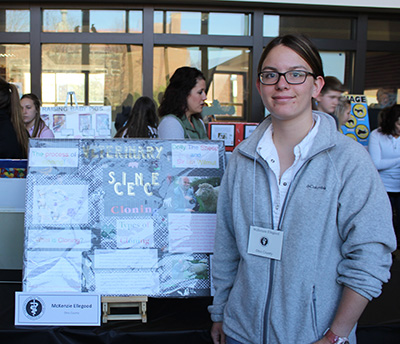
MCKENZIE ELLEGOOD
Cloning
My project is about cloning, how it works, and what kind of processes happen during cloning. My project also talks about Dolly the Sheep and her creation.
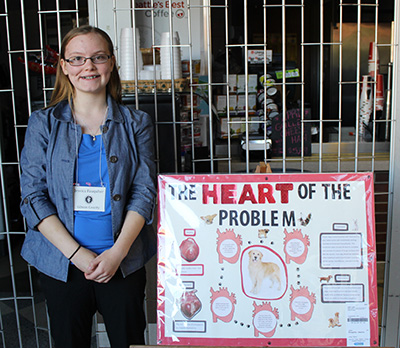
JESSICA FAUQUHER
The Heart of the Problem
My poster explains the disease of heartworms. It shows the differences between a healthy heart and a heartworm-accumulated heart. The cycle of the process is illustrated. Treatment and prevention are also described.
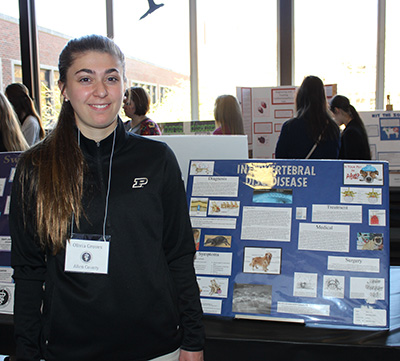
OLIVIA GROVES
Intervertebral Disc Disease
It can be a hit or miss whether a canine or other animal tests positive for certain disease. By vaccinating your animals, they have a lower chance of getting or carrying the disease. This may help stop the disease.

MEKYNA HALL
Getting Technical
My project displays just a few technical advances in the veterinary medical field. It includes a brief description along with a picture exhibiting each advancement.
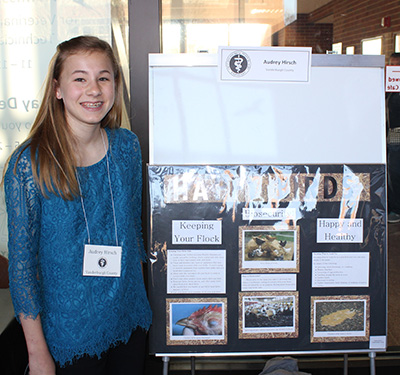
AUDREY HIRSCH
Happy Birds Biosecurity: Keeping your Flock Happy and Healthy
Biosecurity is the step you take to decrease the chance of disease coming in contact with your flock. An absolute must in biosecurity is following exact measures to keep your birds safe and knowing what to look for in order to prevent the spread of a disease.
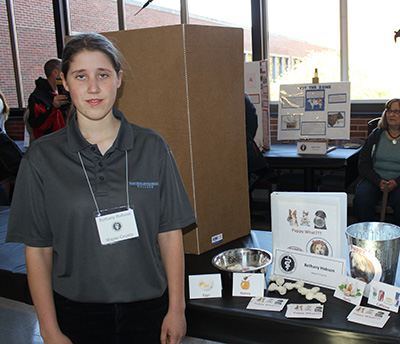
BETHANY HOBSON
Puppy What: Puppy Yum – Puppy Yuck
“Puppy What” is a teaching aid to help inform kids of all ages about what is and is not safe for dogs to consume.

COURTNEY JACKMAN
Introducing the K-laser
I chose to do my project on the K-laser because it is changing the face of medical innovation. The K-laser is fast, easy, and a safe way of healing cuts, wounds, arthritis and much more.
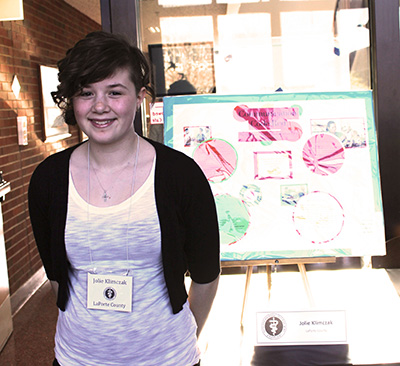
JOLIE KLIMCZAK
Communication Code Red
My project is about how the vet business deals with communication. It shows how important communication is when dealing with customers, since it is essential in this field.
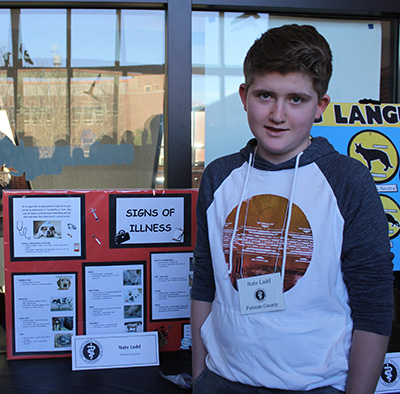
NATE LADD
Signs of Illness
My poster informs about the different signs of illness that an animal may show. It not only displays the general appearance and/or attitude that an animal may display, but also signs that may appear physically on the coat, skin, feet, legs, mucous membranes, etc.
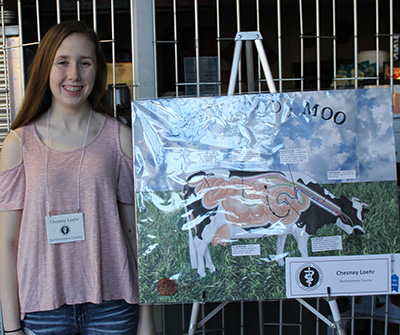
CHESNEY LOEHR
Chew, Poo, Moo
My project focuses on the cow’s digestive system. My poster shows a diagram of a cow and the four parts of their stomach they have. It discusses the functions of each and the process the food goes through.
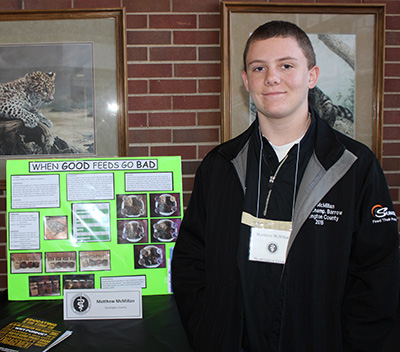
MATTHEW MCMILLAN
When Good Feeds Go Bad
For my project, I wanted to know what conditions are ideal for feeds and which conditions to avoid. I put different types of feed in five different conditions and tracked the changes.

LIBBY NOBLES
What’s Eating You?
My poster describes how to tell if your horse has lice, what causes an outbreak of lice, how an outbreak can be prevented, the different types of treatments, and the two different types of lice.
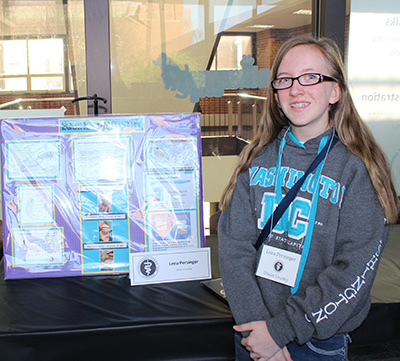
LEEA PERSINGER
Equine Dentistry
My project covers the following aspects of equine dentistry: dental anatomy of the horse’s head and tooth, Triadan chart, how teeth change as a horse gets older and why you “float” horses’ teeth.
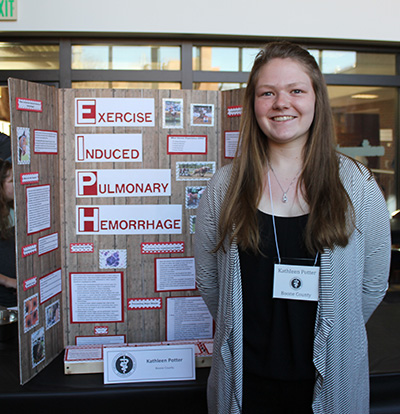
KATHLEEN POTTER
Exercise Induced Pulmonary Hemorrhage
The topic of my project is EIPH or Exercise Induced Pulmonary Hemorrhage. EIPH is bleeding into the lungs and airways of hoses when undergoing strenuous exercise for short periods of time. My project discusses preventative techniques and provides important background into this condition.
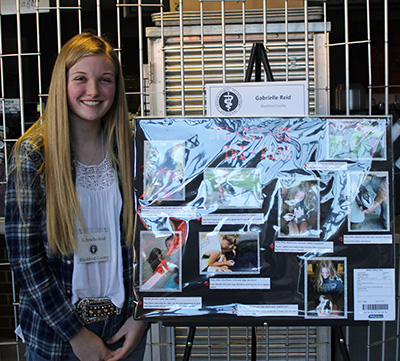
GABRIELLE REID
Spa Day on the Farm
My poster is about some of my farm animals and how I get them ready to show. The information included in this poster are frequently asked questions about the animals along with visual aids.
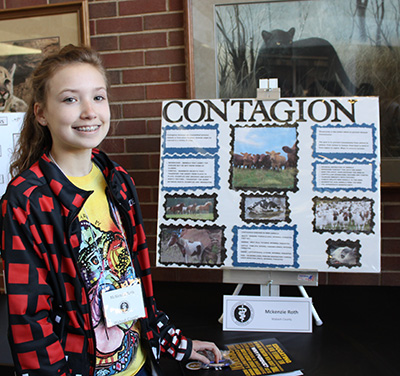
MCKENZIE ROTH
Contagion
This project is about contagious diseases and biosecurity. Contagious diseases are transmitted between animals or from place to place. We take action using biosecurity to prevent disease transmission.
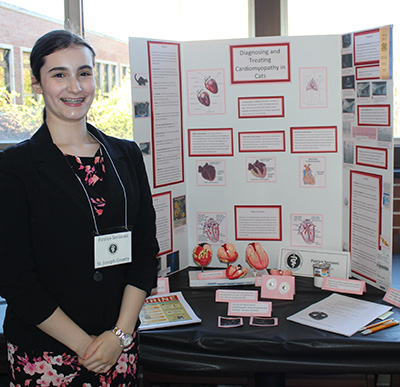
PATRICE SERIANNI
Diagnosing and Treating Cardiomyopathy in Cats
This project is about feline cardiomyopathy, a disease of the heart in cats. There are three types of cardiomyopathy: dilated, hypertrophic, and restrictive. This project discusses ways to diagnose, treat, and prevent this potentially fatal disease. Interactive activities to facilitate learning and fuel discussion are included.
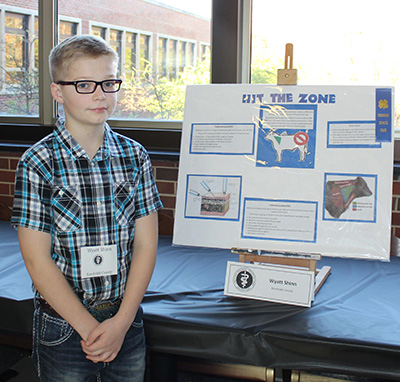
WYATT SHINN
Hit the Zone
This project explains the areas where shots should be administered in beef cattle. It explains why giving shots the right way and in the correct area is vital. It also shows what effect shots have on a profitable beef herd.
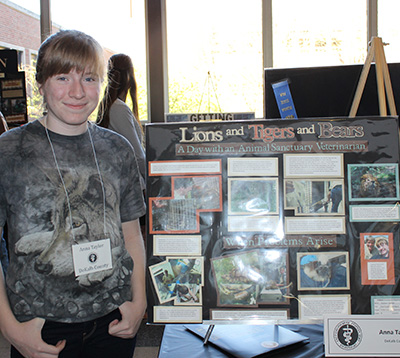
ANNA TAYLOR
Lions and Tigers and Bears: A day with an Animal Sanctuary Veterinarian
Black Pine Sanctuary is home for exotic animals. Keeping the animals healthy is a top priority and that is where Dr. Scott Taylor comes in. Because exotic animals are wild and unpredictable, Dr. Taylor must use keen observation to know whether or not the animals are healthy and when problems arise.
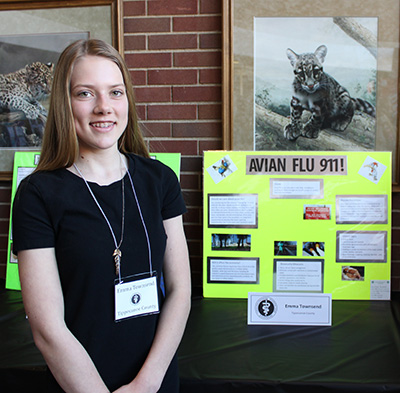
EMMA TOWNSEND
Avian Flu 911!
This poster talks about the cause, symptoms, and the effects the avian flu has on the poultry industry. It explains the different biosecurity measures poultry owners can take to prevent their flock from being infected.

BECCA VANSLYKE
ID ME
This project is about the importance of why we ID animals. I give a brief description of different types of identification to use on animals. There are six different ones I explain with the pros and cons of each, and what types of animals they are used on.
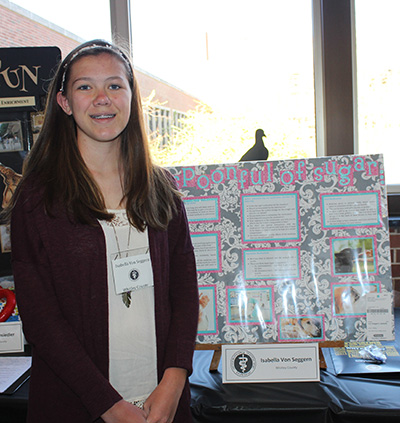
ISABELLA VON SEGGERN
A Spoonful of Sugar
This poster is about the administration of medication to animals and the methods that are used.
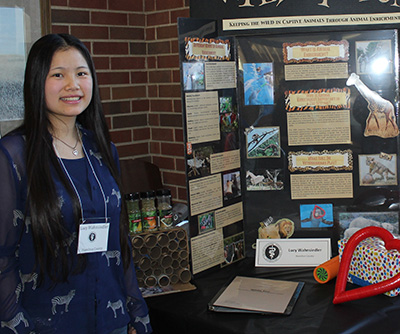
LUCY WAHNSIEDLER
Wildly Fun: Keeping the Wild in Captive Animals through Animal Enrichment
This teaching aid highlights the importance of animal enrichment for captive animals in a zoo setting. It also provides information about how enrichment items must be created, approved, and monitored by veterinarians; zookeepers, and other zoo staff.
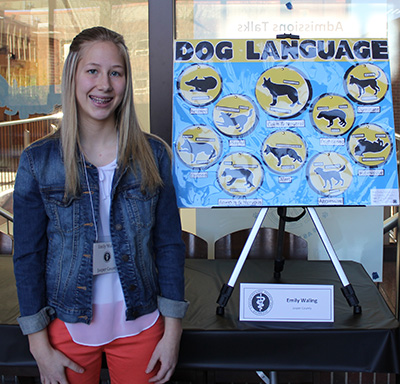
EMILY WALING
Dog Language
This poster is about dog body language. I describe ten different dog behaviors along with visual representations which include stance and attitude. I also explain safety risks associated with each type of behavior.
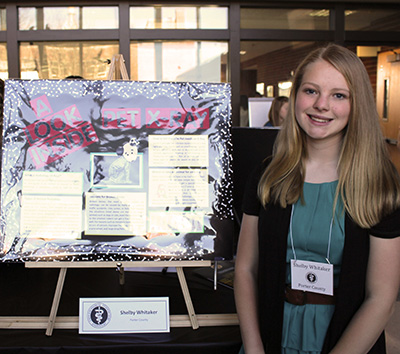
SHELBY WHITAKER
A Look Inside Pet X-ray!
This project is an information board that explains different topics about pet radiology. Some of the information includes different types of animal radiology such as CT scans, magnetic resonance imaging, and ultrasound scans. This board provides information about the types of bone fractures and reasons for broken bones in pets.
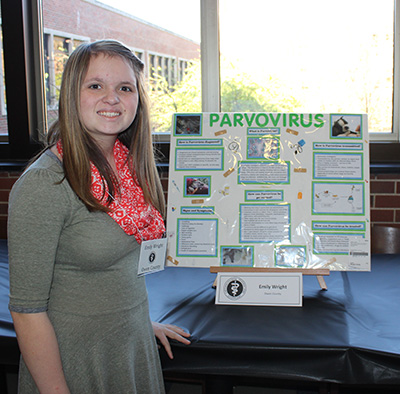
EMILY WRIGHT
Parvovirus
This poster covers the Parvovirus, which can be a very common disease for dogs. The poster covers the symptoms, diagnosis, and treatments.

